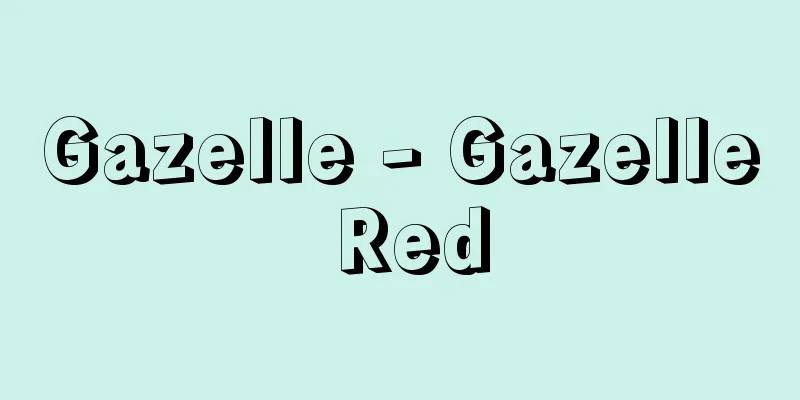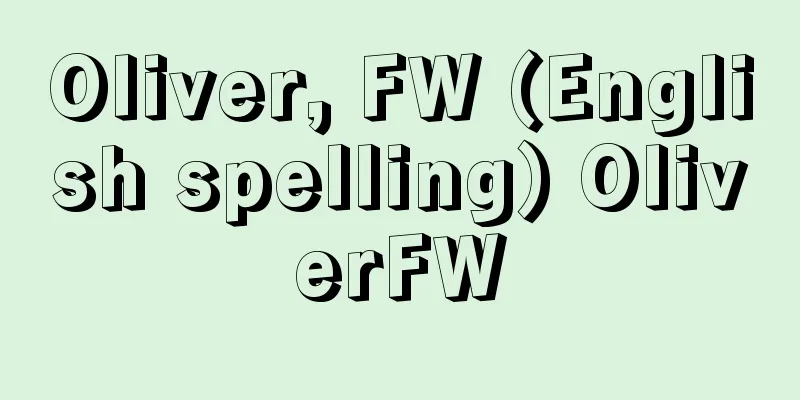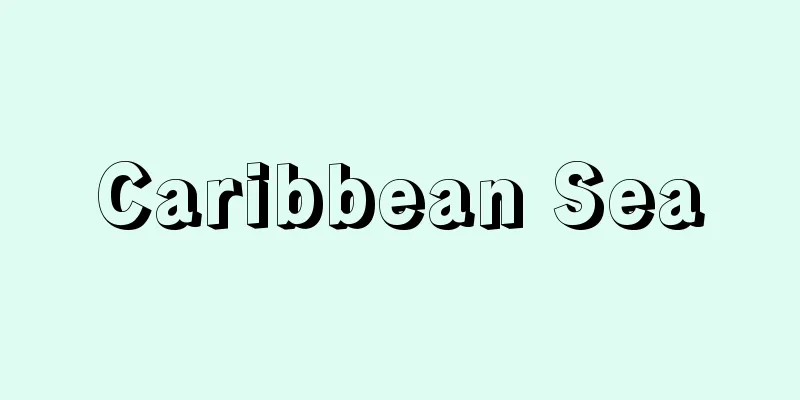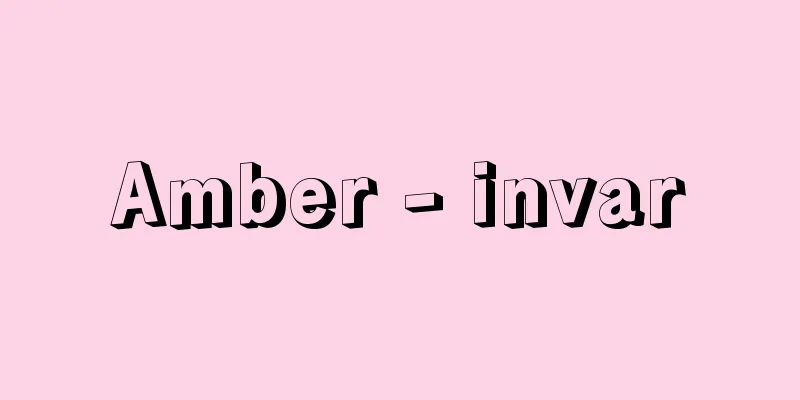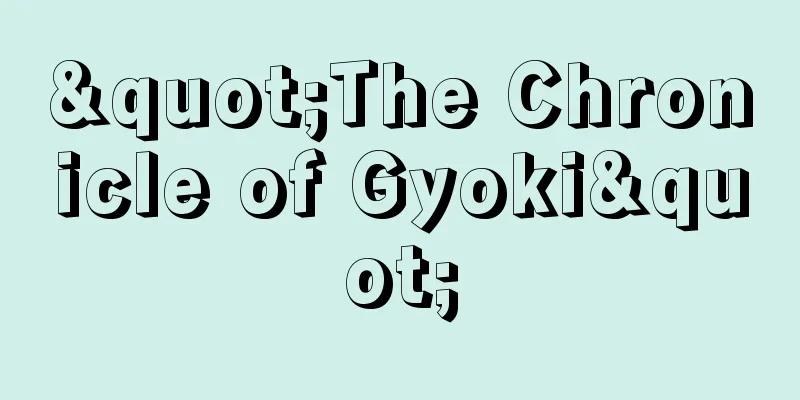United Front - United Front

|
Generally speaking, in a specific, concrete political situation, various classes, parties, and political forces, while maintaining their own unique demands, engage in joint struggle based on common ground on the fundamental issues in the situation. In this sense, it is a tactical form (united front tactics) that has existed historically for a long time (such as "alliances" and "great unity") and can be applied to both conservative and reactionary forces and radical reformist forces. In more modern terms, it refers to a strategic form of movement based on basic policy agreement among progressive forces with a view to political change and the transition to socialism, and examples include the "Anti-Fascist United Front" (1935) at the 7th Congress of Comintern, the "Popular Fronts" in France and Spain based on this, the "National United Front against Japan" (Kuomintang-Communist cooperation) during the Chinese revolution, the Vietnamese "National Liberation Front" that resisted the American invasion of Vietnam, the "People's United" that produced President Allende in Chile, and the "Left-wing Union" in France. In this modern sense, the international united front is sometimes used to refer not only to domestic political change but also to international politics. [Tetsuro Kato] History of the United FrontThe term "united front" became established as a political term after World War I as a political tactic of the communist movement and Comintern. During the Russian Revolution, the joint struggle of the Bolsheviks, Mensheviks, Left SRs, etc., based on the class alliance of workers and peasants (the Labor-Peasant Alliance), had the meaning of a united front in practice, but in the early 1920s in Germany, the German Communist Party and communist-affiliated labor unions called for a joint struggle against the Social Democratic Party and social democratic labor unions, which had previously attacked the Social Democratic Party and social democratic labor unions for the miscarriage of the German November Revolution as a socialist revolution, to defend life under postwar inflation and against the rise of right-wing forces plotting to restore the old system. This is when the term "united front" was used as a political term. This united front tactic, which originated in the German Communist Party, was supported by Lenin and other Comintern leaders, who felt the need to restructure the movement in the postwar revolutionary decline, and was formed as the common line of the world communist movement from the Third Comintern Congress in 1921 to the Fourth Congress in 1922. The united front at this stage, called the "proletarian united front" or the "workers' united front," was based on a realistic understanding of the situation in which the newly born communist parties in each country had yet to establish a base among the working masses, and many workers considered social democratic parties and reformist trade unions, which had traditions dating back to the Second International, to be their own organizations, and aimed to win over the majority of workers to the revolution by drawing mainly low-ranking workers in social democratic parties and trade unions into a joint struggle and, in the process of this joint struggle, bringing them under the influence of communism. During this "early united front" period, negotiations between the leadership of the Social Democratic parties and the Communist parties were also approved, and the possibility of a "workers' government" based on this united front and of a "workers' and peasants' government" in countries with a large peasant population was also considered. Based on this policy, an international conference on joint struggle between the three internationals (Comintern, the Second International, and the Second and a Half International) was held in 1922, and in 1923, temporary "workers' governments" were established in the German states of Saxony and Thuringia. However, after the German "workers' government" was soon defeated and Lenin, who supported the united front, died, the term "united front" was retained in the Comintern from the late 1920s to the early 1930s, but it was considered a maneuver to win over lower-level social democratic workers to the Communist Party, and negotiations between political party and labor union leaders at the top were suppressed under the name of a "united front from below." In the early 1930s, when the Great Depression broke out and fascism rose to power, the "left-wing social democracy as the main enemy theory" and "social fascism theory" were adopted, which considered social democracy, especially its left wing, to be the main enemy and treated social democracy itself on the same level as fascism, and this was one of the factors that allowed Hitler and the Nazism government to be established in Germany. This was also linked to the idea that both fascist and democratic countries were dictatorships of the bourgeoisie and opposed to socialism = dictatorship of the proletariat. At the 7th Congress of Comintern in 1935, the communist forces, shocked by the establishment of the German fascist regime and finally realizing their isolation as revolutionary forces, proposed an anti-fascist united front, uniting all political forces opposed to fascism and not immediately opposing fascism with socialism, but defending bourgeois democracy and actively negotiating with social democratic parties whose social base was the working class. This was based on the experience of the joint struggle between the communist party and other parties in France, Austria, Spain, etc. in 1934, and a united front including not only the working class but also the middle class opposed to fascism was officially recognized as a people's front, and a united front government/popular front government based on this was strategically positioned as one that would prepare for the transition to socialism. Based on this proposal for an anti-fascist united front/popular front, a popular front government was created in France and Spain based on a policy agreement, and in this case, not only the communist party and the social democratic party, but also intellectuals and various anti-fascist mass organizations played important roles. World War II itself had the character of an international united front of anti-fascist coalition nations against the fascist Axis powers, but during this process the Chinese National United Front Against Japan, the anti-fascist resistance movement, and the national liberation struggles of Asia were each developed as united front movements. The establishment of people's democratic states in Eastern Europe and Asia towards the end of the war and after the war was seen as a transition to socialism based on a united front. [Tetsuro Kato] The modern united frontAfter World War II, the united front as a revolutionary approach became common as a strategy. At the same time, it became clear that the united front in each country had to be specific, based on the historical and cultural traditions of each country, and corresponding to the nature and power relations of each state and politics. In the case of developing and semi-developed countries that actually experienced a united front transition to socialism, the main content of the united front was national liberation and national independence, land revolution, confiscation and nationalization of foreign capital, expulsion of war criminals, and democratization of state institutions. In the case of developed countries with developed capitalist productive forces and deep-rooted democratic traditions, the tasks of the anti-monopoly or anti-imperialist, anti-monopoly united front were the regulation and nationalization of the monopoly bourgeoisie and multinational corporations, democratic economic management, and thorough democratization of political and military institutions. The 7th Congress of Comintern (1935) had already advocated a united front/people's front based on the "principal enemy" and "central issues," but all political forces other than the "principal enemy" could be the main actors of the united front related to the "central issues." Therefore, the main actors in forming the united front are not a single class or political party, but an overwhelming majority of people from multiple classes, understood as ethnic groups, the masses of the nation, the people, citizens, etc. Among them, the working class and the workers' political parties and trade union organizations based on it can play a central role in terms of both quantity and political leadership, but the independent demands and autonomous movements of other classes, strata, and political forces can also be recognized and play a role. Also, within the working class, communist and socialist parties, trade unions, and other mass organizations join the united front on an equal footing while respecting each other's autonomy, and in this sense the united front is an essentially democratic form of movement and organization. The united front, which is a joint struggle premised on differences in worldviews and political programs, naturally presupposes differences of opinion within the united front, and competition for hegemony among various parties is acceptable as long as it does not hinder the achievement of the united front's common goals. What is important is the tendency to deny the united front itself, despite having certain common goals and interests, on the grounds of differences in worldviews and programs, and this tendency is overcome in practice in joint struggles at lower levels and in united action, which is a preliminary step to organized cooperation as a united front. The transition to socialism in developed capitalist countries is still an experiment untrodden by humanity, but if it is a peaceful revolution that does not take the form of violent revolution, a revolutionary line based on consensus through elections and the formation of a majority in parliament, and if the goal is democratic socialism that recognizes a multi-party system and democratic change of power in socialist society, the only way to get there is through the democratic development of the united front. The experiences of Western countries and Japan teach us that the united front should include not only political parties but also mass organizations and civic groups, that these forces should clarify their common goals as policy agreements, that not only policy agreements but also organizational agreements are necessary for the democratic management of the united front, that not only struggles against the central government but also united fronts at the local political level and the accumulation of cooperation between residents' and citizens' movements will form the basis of a strong united front, and that international united front struggles such as the anti-Vietnam War and anti-nuclear movements can also play an important role in the development of a united front within a country. The experiences of Italy's Olive Tree, France's Left Union, and Japan's Progressive Municipalities can be said to have been experiments in united front movements based on these principles in modern developed countries. [Tetsuro Kato] "The Anti-Fascist United Front" by Dimitrov, translated by Nobuyoshi Sakai and Yoichi Murata (Otsuki Shoten, Kokumin Bunko)" ▽ "The Theory of State Ideology" by Hideya Kageyama (1973, Aoki Shoten)" ▽ "The Theory of the United Front" edited by Shinzo Shimizu (1968, Aoki Shoten)" [Reference item] |Source: Shogakukan Encyclopedia Nipponica About Encyclopedia Nipponica Information | Legend |
|
一般的には、特定の具体的な政治状況のなかで、諸階級・諸党派・諸政治勢力が、それぞれの独自の要求を保持しながらも、状況のなかでの基本的争点について、一致点に基づく共同の闘争を行うこと。この意味では、歴史的には古くから存在し(「合従連衡」「大同団結」など)、保守反動勢力、急進革新勢力のいずれについても当てはまる戦術形態(統一戦線戦術)である。 より現代的には、革新諸勢力の、政治変革と社会主義への移行を展望しての、基本政策上の一致点に基づく戦略的運動形態をさし、コミンテルン第7回大会での「反ファシズム統一戦線」(1935)、これに基づくフランス、スペインでの「人民戦線」、中国革命での「抗日民族統一戦線」(国共合作)、アメリカのベトナム侵略に抵抗したベトナム「解放民族戦線」、チリでアジェンデ大統領を生み出した「人民連合」、フランスにおける「左翼連合」などがこれに含まれる。また、この現代的意味では、国内での政治変革についてのみならず、国際政治についても国際統一戦線として述べられることがある。 [加藤哲郎] 統一戦線の歴史統一戦線という術語が政治用語として定着してくるのは、第一次世界大戦後の共産主義運動、コミンテルンの政治戦術としてである。ロシア革命過程での、労働者と農民の階級同盟(労農同盟)を基礎としたボリシェビキ、メンシェビキ、左翼エスエルなどの共同闘争は事実上統一戦線としての意味をもっていたが、1920年代初頭に、ドイツにおいて、ドイツ共産党や共産党系労働組合が、それまでドイツ十一月革命の社会主義革命としての流産の責任を負うものとして攻撃してきた社会民主党や社会民主主義的労働組合に対し、戦後インフレ下の生活擁護と旧体制復活をもくろむ右翼勢力の台頭に対する共同闘争を呼びかけた際に用いられたのが、統一戦線の政治用語としての由来である。 このドイツ共産党で生まれた統一戦線戦術は、戦後革命的情勢の退潮のもとで運動再構築の必要に迫られていたレーニンらコミンテルン指導部によって支持され、1921年のコミンテルン第3回大会から22年の第4回大会にかけて、世界共産主義運動の共通の路線として形成された。この段階の統一戦線は、「プロレタリア統一戦線」「労働者統一戦線」とよばれたように、各国に生まれたばかりの共産主義政党がなお労働者大衆のなかに基盤を確立しておらず、多くの労働者は第二インターナショナル以来の伝統をもつ社会民主主義政党や改良主義的労働組合を自分たちの組織と考えているとする現実的状況認識に基づいて、労働者の多数派を革命の方向へ獲得していくために、主として社会民主主義政党・労働組合の下部労働者を共同闘争に引き入れ、この共同闘争の過程で共産主義の影響下に置いていこうとするものであった。この「初期統一戦線」期にも、社会民主主義政党指導部と共産党との交渉も承認されていたし、この労働者統一戦線を基盤とした「労働者政府」や、多数の農民を抱えている国々での「労働者・農民政府」の可能性も考えられていた。この方針に基づいて、1922年には三つのインターナショナル(コミンテルン、第二インターナショナル、第二半インターナショナル)間の共同闘争についての国際会議が開かれ、23年にはドイツのザクセン、チューリンゲン州政府での「労働者政府」の一時的樹立も行われた。 しかし、ドイツの「労働者政府」がすぐに敗北し、統一戦線の支持者であったレーニンが死去してのち、1920年代後半から30年代前半のコミンテルンでは、統一戦線ということばは残されたものの、もっぱら社会民主主義系下部労働者を共産党に獲得するためのマヌーバー(策略)とされ、政党・労働組合指導者間の頂上交渉は「下からの統一戦線」の名のもとに抑制された。世界恐慌が勃発(ぼっぱつ)しファシズムが台頭してきた30年代初頭には、社会民主主義とくにその左翼を主要敵とみなし社会民主主義そのものをファシズムと同列に扱う「左翼社会民主主義主要敵論」「社会ファシズム論」が採用され、ドイツでのヒトラー・ナチズム政権樹立を許す一因となった。これはまた、ファシズム国家も民主主義国家もブルジョアジーの独裁として社会主義=プロレタリア独裁と対置する思考と結び付いていた。 1935年のコミンテルン第7回大会において、ドイツ・ファシズム政権成立の衝撃を受け、革命勢力の孤立をようやく自覚した共産主義勢力は、ファシズムに反対するすべての政治勢力を結集し、ファシズムに対してただちに社会主義を対置するのではなく、ブルジョア民主主義を擁護し、労働者階級に社会的基盤をもつ社会民主主義政党と積極的に交渉していくという、反ファシズム統一戦線を提唱した。これは、34年のフランス、オーストリア、スペインなどでの共産党と他党派との共同闘争の経験を踏まえたもので、労働者階級ばかりでなくファシズムに反対する中間層をも含む統一戦線が人民戦線として公認され、これを基盤とした統一戦線政府・人民戦線政府が社会主義への移行を準備するものとして戦略的に位置づけられた。この反ファシズム統一戦線・人民戦線の提唱に基づいて、フランスやスペインでは、政策協定を基礎にした人民戦線政府がつくられたが、その際、共産党と社会民主主義政党ばかりでなく、知識人やさまざまな反ファシズム大衆団体も重要な役割を果たした。第二次大戦は、それ自体としてみても、ファシズム枢軸諸国に対する反ファシズム連合諸国の国際統一戦線的性格をもっていたが、この過程での中国抗日民族統一戦線、反ファシズム・レジスタンス運動、アジアの民族解放闘争は、それぞれに統一戦線運動として展開された。戦争末期から戦後にかけての、東欧やアジアでの人民民主主義国家の成立は、統一戦線を基礎にした社会主義への移行と位置づけられた。 [加藤哲郎] 現代の統一戦線第二次大戦後、革命路線としての統一戦線は、戦略的なものとして一般化した。それと同時に、各国での統一戦線は、それぞれの国の歴史的・文化的伝統に立脚した、それぞれの国家と政治の性質と勢力関係に応じた具体的なものでなければならないことも明らかになった。社会主義への統一戦線的移行を現実に経験した後進国や中進国の場合、民族的解放と国家的独立、土地革命や外国資本の没収・国有化、戦犯追放や国家機構の民主化が、統一戦線の主要な内容となった。発達した資本主義的生産力をもち民主主義的伝統の根づいてきた先進国の場合、独占ブルジョアジーや多国籍企業への規制や国有化、民主的経済運営や政治的・軍事的諸制度の民主化の徹底が、反独占ないし反帝反独占統一戦線の課題とされた。すでにコミンテルン第7回大会(1935)は、「主要敵」と「中心問題」に応じた統一戦線・人民戦線を提唱していたが、「主要敵」を除くすべての政治勢力は、「中心問題」にかかわる統一戦線の主体となりうる。したがって、統一戦線形成の主体は、一つの階級ないし政党政派ではなく、民族、国民大衆、人民、市民などとして把握される圧倒的多数で多階層的な人々の集合である。このなかで労働者階級とそれに基礎を置く労働者政党・労働組合組織は、量的にも政治指導においても中核的役割を果たしうるが、その他の階級・階層・政治勢力の独自の要求と自律的運動も存在意義が認められ、役割を果たしうる。また、労働者階級内部においても、共産主義政党と社会主義政党、労働組合その他の大衆諸組織は、相互にその自主性を尊重しつつ対等・平等の立場で統一戦線に加わるのであり、この意味で統一戦線は、本質的に民主主義的な運動形態であり、運動の組織形態である。もともと世界観や政治的綱領の相違を前提にしての共同闘争である統一戦線は、統一戦線内での意見の相違を当然に前提とするし、諸党派のヘゲモニー競争も、それが統一戦線の共同目標達成を阻害するものでない限り、認められる。重要なのは、共通の一定の目標や利害をもちながら、その世界観や綱領上の相違を理由として統一戦線そのものを否定する傾向であり、こうした傾向は、より低次のレベルでの共同闘争と、統一戦線としての組織的共闘の前段階である統一行動のなかで、実践的に克服されていく。 発達した資本主義国の社会主義への移行は、まだ人類未踏の実験であるが、それが暴力革命の形態をとらない平和革命を目ざし、選挙と議会での多数派形成による合意による革命路線であり、社会主義社会においても複数政党制や民主的政権交代を承認する民主主義的社会主義を目標として設定するならば、そこに至る過程は統一戦線の民主主義的発展以外にはありえない。西欧諸国やわが国でのこれまでの経験は、統一戦線には政党ばかりでなく諸大衆組織・市民団体も加わるべきこと、これらの諸勢力は共通の目標を政策協定として明確にすべきこと、統一戦線の民主的運営のためには政策協定ばかりでなく組織協定も必要なこと、中央政府に対する闘争ばかりでなく地方政治レベルの統一戦線や住民運動・市民運動の共闘の積み重ねが強固な統一戦線の基盤となること、ベトナム反戦や反核運動のような国際統一戦線的闘争も国内での統一戦線発展に重要な役割を果たしうること、などを教えている。イタリアの「オリーブの木」、フランスの「左翼連合」、わが国の「革新自治体」などの経験は、こうした原理に基づく現代先進国の統一戦線運動の実験であったといえよう。 [加藤哲郎] 『ディミトロフ著、坂井信義・村田陽一訳『反ファシズム統一戦線』(大月書店・国民文庫)』▽『影山日出弥著『国家イデオロギー論』(1973・青木書店)』▽『清水慎三編著『統一戦線論』(1968・青木書店)』 [参照項目] |出典 小学館 日本大百科全書(ニッポニカ)日本大百科全書(ニッポニカ)について 情報 | 凡例 |
<<: Unified Field Theory - Toitsubariron
>>: Identity - identity (English spelling)
Recommend
penis bone
… The remaining mammalian (eutherian) penises are...
Dawson, GG (English spelling) DawsonGG
…He received a lot of criticism for trying to use...
fourniture de bureau (English spelling) fournituredebureau
…The English word for stationery is stationery, b...
Fabric cotton - Kijimenpu
…A general term for the industry that produces te...
Yellow phosphorus (Phosphorus)
An allotrope of phosphorus. Pure phosphorus is col...
Ding Ling
Chinese female writer. Her real name was Jiang Bi...
Mr. Ichikawa
A samurai family based in Takai County, Shinano Pr...
Cabaret
The name comes from the fact that the photographe...
Glareolidae
…General term for the family Glareolidae, or one ...
Ichikawa Raizo (Kabuki)
…(1) 4th (1820-1866, Bunsei 3-Keio 2) A disciple ...
Rip current - Riganryu (English spelling)
A strong water current where seawater washed up o...
Emergency birth - Kyusan
...In many cases, it is complicated by some kind ...
Eagle (golf) - Eagle
…An 18-hole course is usually designed with 4 sho...
Ocean Transport and Trading
…Ocean Transport & Trading is a shipping comp...
Yoshisuke Matsunaga
[raw]? [Died] Enkyo 1 (1744) A Japanese mathematic...

